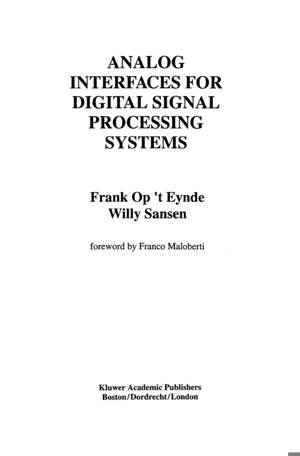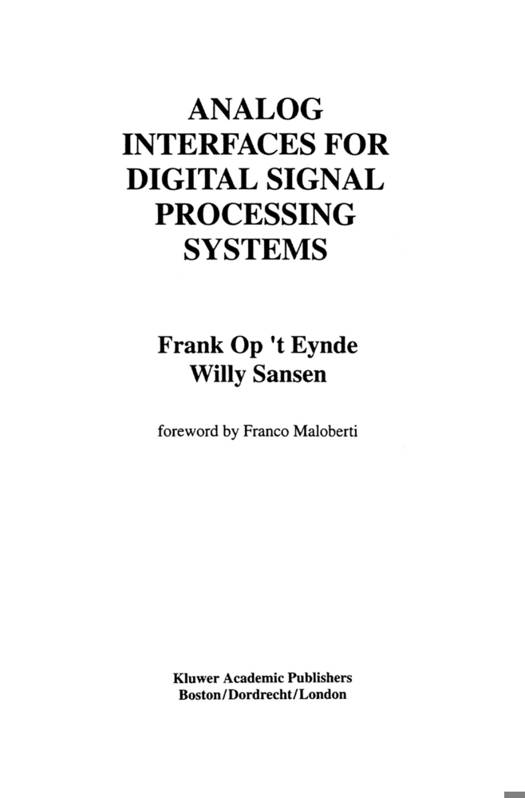
- Afhalen na 1 uur in een winkel met voorraad
- Gratis thuislevering in België vanaf € 30
- Ruim aanbod met 7 miljoen producten
- Afhalen na 1 uur in een winkel met voorraad
- Gratis thuislevering in België vanaf € 30
- Ruim aanbod met 7 miljoen producten
Zoeken
€ 259,45
+ 518 punten
Uitvoering
Omschrijving
It is a great honor to provide an introduction for Dr. Frank Op 't Eynde's and Dr. Willy Sansen's book "Analog Interfaces for Digital Signal Processing Systems". The field of analog integrated circuit design is undergoing rapid evolution. The pervasiveness of digital processing has considerably modified the micro-system architectures: the analog part of complex mixed systems is more and more pushed at the boundary limits of the processing chain. Moreover, the increased performance of digital circuits, in terms of accuracy and speed, are making the specification requirements of analog circuits very strict. In addition to this, the technology, supply voltage and power consumption of analog circuits must be compatible with those, typical for digital circuits. Therefore, in a few words, analog circuits are becoming complex and specialised interfaces between the real world and digital signal processing domains. This technological evolution should be accompanied by an equivalently fast evolution in designer competencies. Knowledge of complicated signal handling should be quickly replaced by know-how of simple but very accurate and very fast signal processing and a solid background in data conversion techniques. All of this through the use of the CMOS (and possibly BiCMOS) technology.
Specificaties
Betrokkenen
- Auteur(s):
- Uitgeverij:
Inhoud
- Aantal bladzijden:
- 251
- Taal:
- Engels
- Reeks:
- Reeksnummer:
- nr. 225
Eigenschappen
- Productcode (EAN):
- 9781461364320
- Verschijningsdatum:
- 16/12/2012
- Uitvoering:
- Paperback
- Formaat:
- Trade paperback (VS)
- Afmetingen:
- 156 mm x 234 mm
- Gewicht:
- 376 g

Alleen bij Standaard Boekhandel
+ 518 punten op je klantenkaart van Standaard Boekhandel
Beoordelingen
We publiceren alleen reviews die voldoen aan de voorwaarden voor reviews. Bekijk onze voorwaarden voor reviews.











